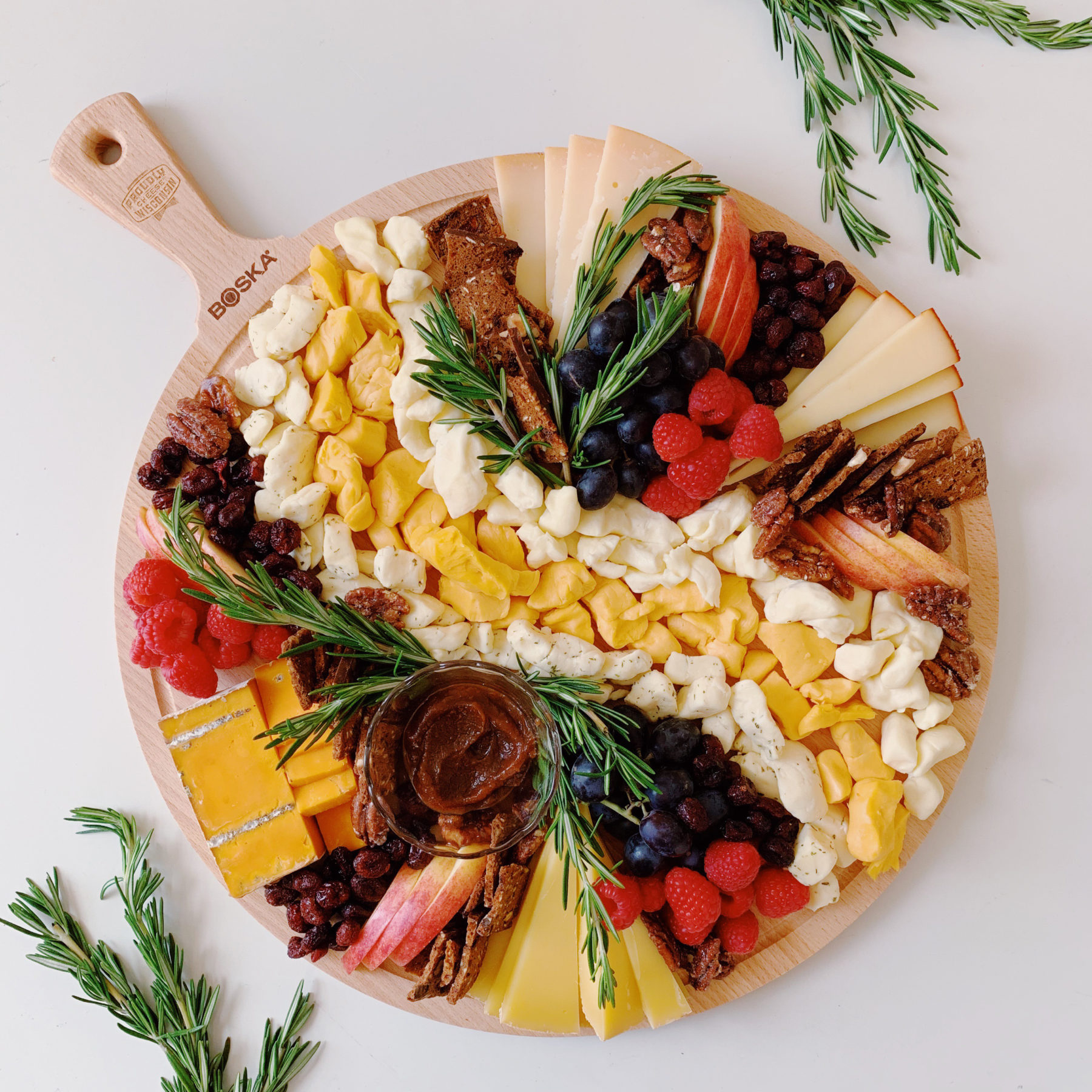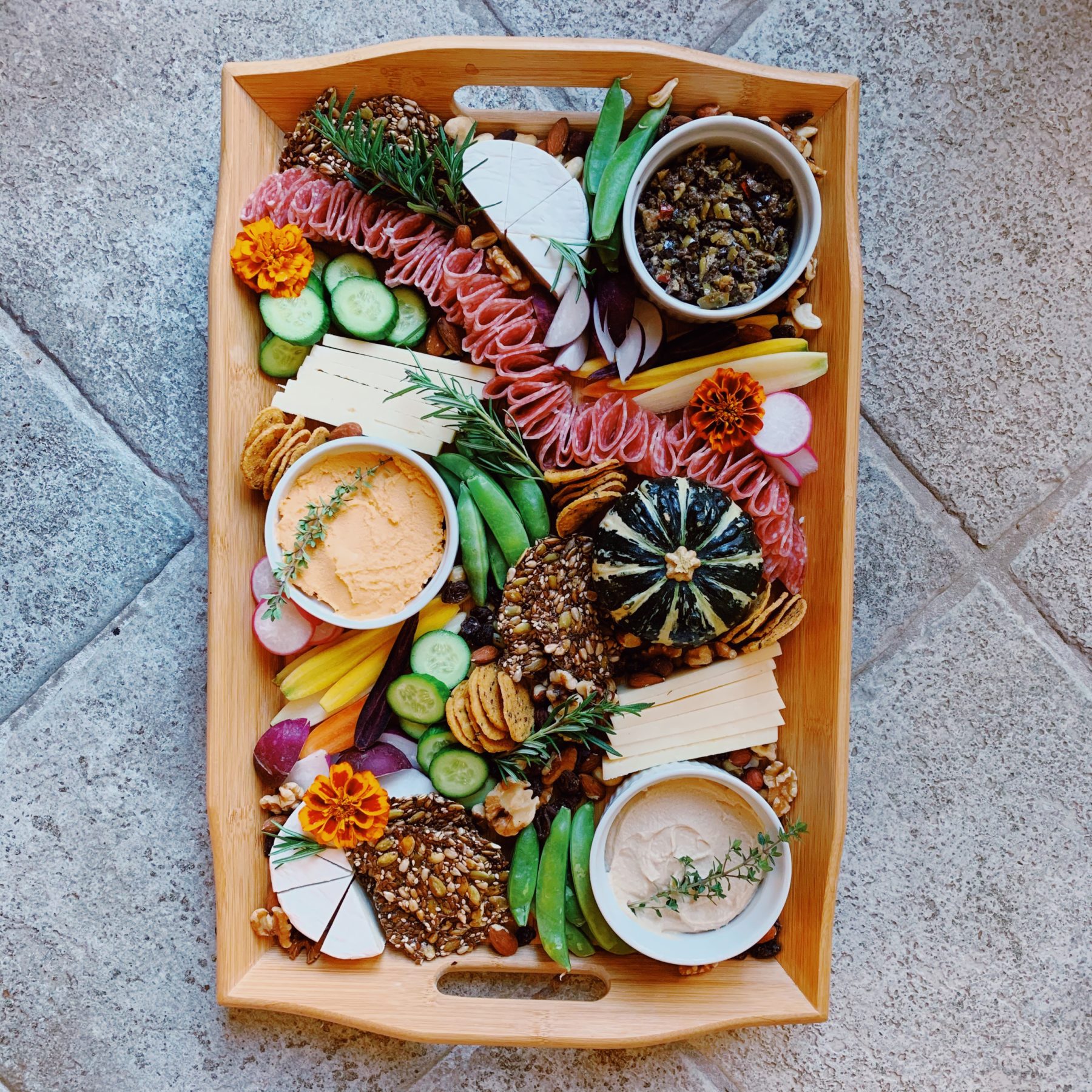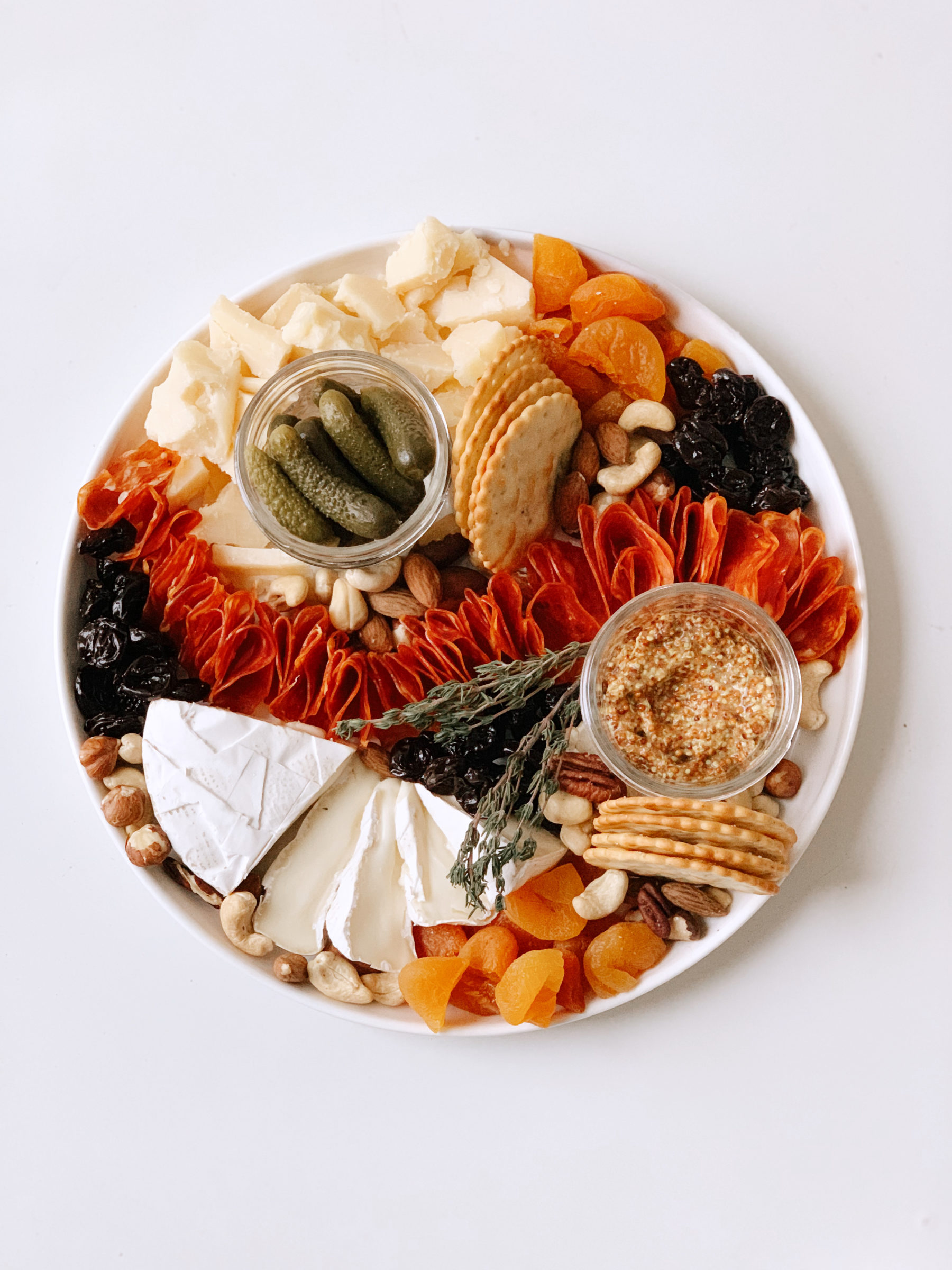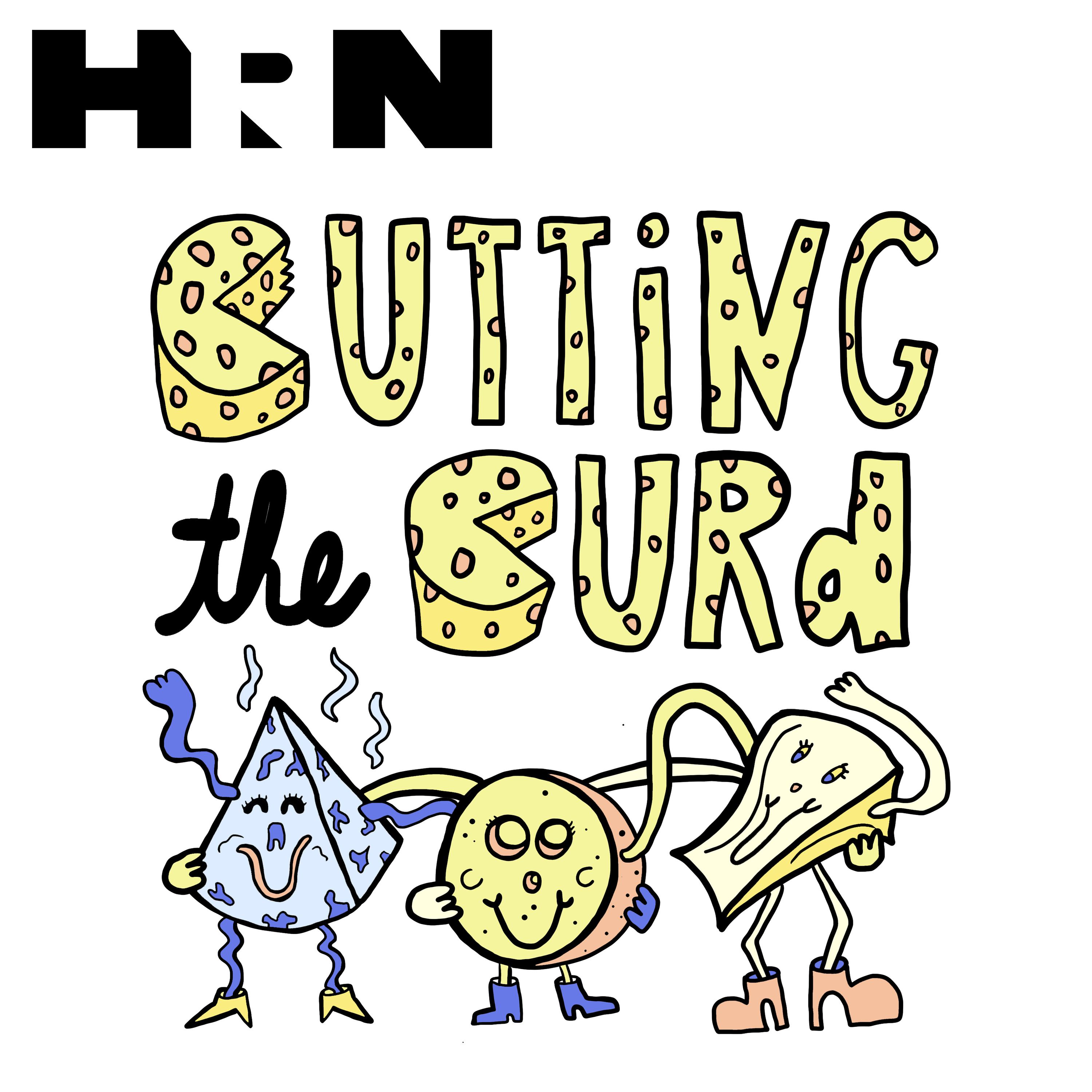Perfecting the Cheese Plate
by H Conley
The holidays are just around the corner, and we can’t think of a better way to showcase your cheese knowledge, entertaining skills, and impeccable taste to friends and family than with a decadent cheese board.
When putting together a board, don’t simply place 5 cheeses on a cutting board with some knives for people to cut themselves. This leads to soft cheeses getting spread onto hard cheese, everyone’s fingers all over everything, and frustration from guests who have to wait for someone to finish using a knife. This is acceptable in a pinch, but you can do better!
To learn how, we got some advice from Marissa Mullen, the creator of the Instagram @ThatCheesePlate. She was a guest on HRN On Tour at Cheeselandia Brooklyn, an event celebrating Wisconsin Cheese.
- Prep everything beforehand: Your hard cheeses, produce (apples/pears/cucumbers) and sausages should be sliced up so that no one has to worry about cutting their own pieces.
- Give your cheeses room to breathe: You don’t want your blue cheese taking over the flavor of your alpine because they were right up against each other. Let every cheese have its own space.
- Think of your plate as a landscape: Use salami rivers and produce ponds to create boundaries between the landmasses of cheese. This will add some beautiful patterns of color to what might otherwise be a boring board.
- Find variety in your cheese: People can be picky about cheese. Try to have something for those who like it funky, smoky, sharp or mild. There should be hard, semi-hard and soft, and to mix it up further, some goat, some sheep, and some cow milk cheese. This way no one is left out of the cheesy fun!
- Find variety in your accouterments: Some smokey, salty sausage, some crisp, juicy apple, some acidy, crunchy cornichons, some dried fruit, candied nuts, and a few cracker choices make it so that everyone, not just cheese lovers, can find something delicious on the plate. A bowl of honey or fig jam can complement almost any cheese. Also, go beyond the expected. Radishes, cauliflower or chocolate might have a place on your board, you just have to try it and find out.
- Don’t be afraid to garnish: It doesn’t have to be intended to be eaten, use some rosemary to add a nice aroma and citrus or edible flowers to add a pop of color.
The most important thing is to start with the cheese. If your cheeses have a good balance of flavors, so will everything else. Here are some suggestions of incredible Wisconsin Cheeses that you don’t want to miss.
- Uplands Pleasant Ridge Reserve: A versatile hard cheese with a sharpness that can complement the saltiness of a cornichon or sausage, or can be mellowed with the sweetness of a fig jam.
- Bleu Mont Dairy Bandaged Cheddar: Cheddar is a crowd-pleaser, and a cloth bound/bandaged cheddar will have salt crystals that are just delightful. This cheddar is aged in natural caves on spruce boards, which adds nutty, earthy complexities to this beauty.
- Castle Rock Smoky Blue: This is an unexpected cheese. Not everyone loves the combination of blue and smoky flavors, but for those who do, it is a complex, delicious and a unique delight.
- Marieke® Gouda Premium (aged 12-18 months): This aged gouda, is harder than you’d expect from this wax rind cheese. Its flavor offers hints of butterscotch and toast.
- Roth Cheese Monroe: This is a semi-soft, creamy, fruity double-cream cheese with a nice mild funk. Emphasize whichever of these flavor notes you like the best with specific pairings for this cheese such as fig jam, sliced apple, or soppressata.
- Uplands Rush Creek Reserve: This gooey and decadent cheese is only available in the fall and winter. It’s wrapped in spruce bark and is soft enough to scoop up with a cracker or eat with a spoon.
Hear from Marissa Mullen about the self-care aspects of creating cheese plates on HRN On Tour Episode 259 at Cheeselandia Brooklyn.
All photos courtesy Marissa Mullen, @thatcheeseplate.













